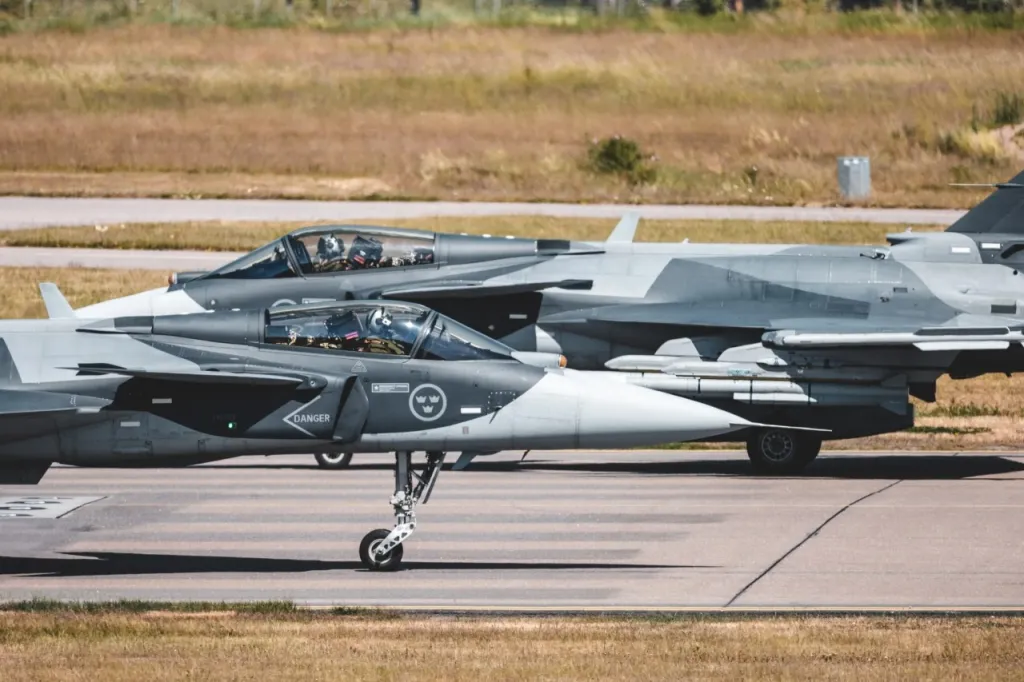The topic of discussion revolves around the competition between SAAB's Gripen-E fighters and the Indian Air Force's $20 billion MRFA contract, with LCA Tejas being the major obstacle for SAAB to secure the deal.
After a long period of efforts, Saab has succeeded in securing a significant deal with the Royal Thai Air Force for Gripen E/F fighter jets.
This progress represents a major shift for the Swedish military company, indicating the possibility of pursuing new prospects, such as vying for India’s greatly anticipated multi-role fighter aircraft (MRFA) contract.
On August 27, the Royal Thai Air Force declared their plan to acquire the Gripen E/F, stating that the aircraft is well-suited to fulfill their strategic and doctrinal requirements.
The RTAF reported that the decision was made following an extensive ten-month evaluation period. The support from the Thai Air Force is considered a major advantage for Saab, who has faced challenges in winning contracts over strong rivals in the past.
Richard Smith, who is the Deputy Head of Marketing & Sales for Gripen, shared his contentment about the agreement, saying, "More good news for our #gripen team." After delivering 4 Gripen Cs to the Hungarian Air Force, the Gripen E/F has surpassed the F-16 and has been chosen by Thailand. Saab has announced that the Royal Thai Air Force will become the third operator of the Gripen E/F.
What is the level of capability of the Gripen E/F aircraft?
The Gripen E, the most recent version of the JAS 39 fighter jet, was awarded its Military Restricted Type Certificate (MRTC) in November 2022, verifying its suitability for military use. The enhanced model has been significantly improved, making it a formidable rival to aircraft such as the Rafale.
The Gripen-E series offers improved features such as a stronger engine, advanced radar technology, and increased payload capacity. The aircraft is powered by the Volvo RM12 afterburner turbo engine, allowing it to achieve speeds of Mach 2 and cover a distance of 932 miles.
The Gripen E is equipped with ten hardpoints, allowing it to accommodate a wide variety of weapons and pods. The plane has a quick turnaround time, needing only 10 minutes for air-to-air missions and 20 minutes for air-to-ground missions.
Furthermore, the Gripen E now has a 40% larger internal fuel capacity, enabling it to have an extended airborne time compared to its predecessors.
The cockpit of the Gripen E has undergone a full redesign incorporating SAAB's Human-Machine Collaboration concept, enhancing the interaction between pilot and aircraft for optimal performance. This consists of a hands-on-throttle-and-stick (HOTAS) arrangement that reduces distractions and improves awareness of the situation.
The pilot receives information on three Multi-Function Displays (MFDs) and a Wide Area Display, with a heads-up display on the pilot's visor. Additionally, the system utilizes Artificial Intelligence (AI) to provide accurate and current information.
The Gripen E is a versatile aircraft that can be equipped with different weapons for a range of missions such as electronic warfare, air-to-air combat, and bombing operations. In air-to-air combat, fighter jets can be equipped with missiles like AMRAAM, ASRAAM, IRIS-T, and Meteor for engaging enemy aircraft.
The aircraft's weapons range from GBU and Mk-series bombs to missiles such as the AGM-65 Maverick and Taurus KEPD 350 for air-to-surface operations. The ability to adapt and be flexible in various combat situations makes the Gripen E fighter a strong and versatile contender in modern warfare.








